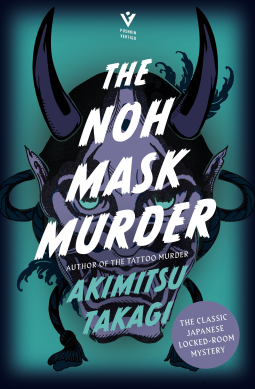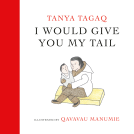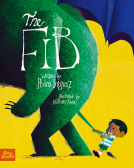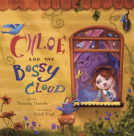
The Noh Mask Murder
by Akimitsu Takagi
This title was previously available on NetGalley and is now archived.
Send NetGalley books directly to your Kindle or Kindle app
1
To read on a Kindle or Kindle app, please add kindle@netgalley.com as an approved email address to receive files in your Amazon account. Click here for step-by-step instructions.
2
Also find your Kindle email address within your Amazon account, and enter it here.
Pub Date 4 Jun 2024 | Archive Date 18 Feb 2024
Pushkin Press | Pushkin Vertigo
Talking about this book? Use #TheNohMaskMurder #NetGalley. More hashtag tips!
Description
A bewildering locked-room murder occurs as an amateur crime writer investigates strange events in the Chizurui mansion in this prizewinning classic Japanese mystery
The 1st book in English from Akimitsu Takagi since his “Clever, kinky, and highly entertaining” The Tattoo Murder Case (Washington Post)
This ingeniously constructed masterpiece, written by one of Japan's most celebrated crime writers and translated into English for the first time, is perfect for locked-room mystery fans who can’t resist a breathtaking conclusion.
In the Chizurui family mansion, a haunting presence casts a shadow over its residents. By night, an eerie figure, clad in a sinister Hannya mask is seen roaming around the house. An amateur murder mystery writer, Akimitsu Takagi, is sent to investigate — but his investigation takes a harrowing turn as tragedy strikes the Chizurui family.
Within the confines of a locked study, the head of the family is found dead, with only an ominous Hannya mask lying on the floor by his side and the lingering scent of jasmine in the air as clues to his mysterious murder.
As Takagi delves deeper into the perplexing case, he discovers a tangled web of secrets and grudges. Can he discover the link between the family and the curse of the Hannya mask? Who was the person who called the undertaker and asked for three coffins on the night of the murder? And do those three coffins mean the curse of the Hannya mask is about to strike again?
The Noh Mask Murder’s legendary ending offers locked-room mystery fans the perfect coda to an ingenously constructed mystery.
Available Editions
| EDITION | Other Format |
| ISBN | 9781782279655 |
| PRICE | US$16.95 (USD) |
| PAGES | 320 |
Available on NetGalley
Featured Reviews
I grabbed this because I enjoyed the Tattoo Murder Case and knew a bit of what to expect. The Noh Mask Murder Case is a reprint from a well known Japanese author now deceased. This locked room murder mystery, is similar to another historic story,taking a lot of The Greene Murder Case (S. S. Van Dine). Good atmosphere and shocking ending!
 Alan M, Reviewer
Alan M, Reviewer
Originally published in 1950, The Noh Mask Murder is a take on the classic locked room murder mystery. For a twist, Takagi places himself in the novel as investigating the case. The story was written very well, and the full truth behind the murders was well hidden, unless the reader recognized certain aspects, though specific knowledge in a couple of areas. I've been enjoying Japanese murder novels, and except for the killer reveal not being all that surprising, I found this book to be as good as any I've read in the genre.
A murder mystery book fanatic gets the chance to live it's dream, and gets involved in the investigation of a series of suspicious deaths. Will his time reading about murder mysteries would be enough to solve this case?
This book is a fun time. Really fast paced, and even though it was first published over fifty years ago, is a timeless tell so it doesn't feel outdated in any sense. Plot twist and a little insight about the use and differences of the masks make this an interesting read, that would make you want to finish in one sitting.
If you, as me, often get confused with many characters being introduced, wrote down names and how they are related to each other was very helpful to me in the meantime of getting familiar with them.
The late Akimitsu Takagi wrote a locked room mystery which was indeed ingenious. The Noh Mask Murder is a lot of fun. It's a clever spin on this popular mystery subgenre. The book was written in 1950 but proves to be timeless. It is a quick read with some entertaining twists and turns. I highly recommend it. Thank you to Pushkin Press, Pushkin Vertigo, and NetGalley for the advance reading copy in exchange for my honest opinion!
 Media/Journalist 144784
Media/Journalist 144784
This book, written in 1951, has an interesting set up. The author tells you he tried to solve a locked room mystery but could not, however someone else did. Then, later, he received some letters and he decided to publish the whole of the event.
The case involves the Chizai family, formerly headed by a famous and respected professor who died from a heart attack several years before. Those left in the professor’s house by the sea are the professor’s daughter, Hisako, who has gone mad and his son, Kenkichi, 14, who has a heart valve issue and is expected to die soon. Also surviving and living at the house are the professor’s brother, Tajiro, a greedy man, his sons, Rintaro, who may be worse than his father and Yojiro, a nihilist, his daughter, Suwaho and his mother Sonoe, who is bedridden.
The author’s friend Koichi Yamato is employed by the family and it is he who calls upon the author to help him solve the mystery. First Tajiro is killed and is found alone, in a room locked from the inside, with a smell of jasmine in the air and a Noh mask beside the body. Later, other murders occur, each with the jasmine and a Noh connection. Who is committing these murders and why?
This is a very traditional Japanese mystery, but a good one, as long as one keeps in mind the time period during which it was written. Nice ending. Recommended.
I love a lock room mystery as I love solving a puzzle so was really excited for this one and it kept me hooked as I wanted to know the truth.
 Mary K, Reviewer
Mary K, Reviewer
Written in 1950, the Noh Mask Murder handles its age beautifully. What a gentle, interesting yet brutal book. I was captivated not only by the story but also by the beautiful way it's told. The language is lofty at times but packs a mighty punch when needed. The twist was also something I wasn't expecting yet it was very appropriate and gratifying. I will definitely seek out other books by Takagi to again be captivated by excellent subject matter and storytelling finesse. Time well spent in a world of Takagi's imagination.
 Reviewer 1325306
Reviewer 1325306
A classic Japanese locked-room mystery, a page-turner that was hard to let go until the very end! The author cleverly inserts himself into the story of the ghastly events concerning Chizui family and their guest Koichi Yamagi who is his long time friend and recently returned from the war. The Chizui family is wealthy, but plagued with tragedies and illnesses. It is the sight of a strange individual wearing the Noh mask in the night that starts off terrifying events that will threaten family members one by one. The Noh mask is considered a cursed family heirloom, thus it holds quite a grip on the minds of the troubled family that harbours troubling, brutal secrets. The first one to die is the patriarch Taijiro, inside a locked room, with the terrifying Noh mask beside him. Seemingly dying of sheer terror, more will soon join Taijiro in this grizzly fate. Is it a sign of something otherwordly coming for them? Do they deserve it? Will the two friends be able to uncover the mysteries and reconcile their own complicated feelings over what is happening? A thoroughly captivating representative of its genre!
 Reviewer 1330564
Reviewer 1330564
I received this book as an ARC from Netgalley, however all opinions are my own.
How I read this book: eBook.
So the reason I wanted to read this book is because I was scrolling through the "read now" section of netgalley and the cover caught my eye. I am so glad that I was able to get a hold of this book because it genuinely was such an interesting read. The start of the book is a little slow because it is basically describing how the characters come to be together in the same house and explains in detail about Noh, which for me who knows nothing about Noh was really cool to read and learn more about, but soon picks up as we move through the book. I didn't realise until after I read this that this was originally written in 1950 (according to goodreads) and has only just been translated in English. I will say if you're going to read this it truly does read like a book that was written in the 50s and the way that things were handled back then. Most of the book is written in the form of Koichi's journal and very much keeps you gripped in chapter after chapter. I really enjoyed that Takagi placed himself in the novel as being the person who investigates the case and how smartly his character is written. This book is also filled with twists and turns at the end and I definitely would recommend this to anyone who loves their mystery/thriller books.
My Favourite Characters:
I'm not going to lie friends. I don't really have a favourite character in this book. So many of the characters are written to be cruel/unjust and it was just really hard to feel attached to any of them. That isn't to say the characters aren't written well. The author actually did an incredible job at writing them, I just didn't love any of them.
My Least Favourite Characters:
- Rintaro: Rintaro is a literal ass throughout the book and I actually wish we got less of him. The author did a very good job at writing him to be hated though.
(If you'd like to see more of my reviews please go to my blog:
https://doesden.blogspot.com/)
Very reminiscent of an Agatha Christie-style mystery. This was a good classic with some intriguing elements to be solved. There's even an interesting integration of Japanese theater, Shakespeare and science interwoven in one of the mysteries.
I found the writing a bit verbose in places. And I wasn't a big fan of the format (journal entries—written by one character, read by another), which was at times confusing regarding which “I” the first person POV was referring to.
Note: I received this book as an ARC. It is scheduled to be released June 4, 2024. This is the English language translation. This book was originally published in 1950, in Japan.
This book was originally written in 1950 and now in 2024 translated into English for all of us to enjoy this intelligent locked room mystery. In the Chizurui family mansion, a haunting presence casts a shadow over its residents. By night, an eerie figure, clad in a sinister Hannya mask is seen roaming around the house. An amateur murder mystery writer, Akimitsu Takagi, is sent to investigate — but his investigation takes a harrowing turn as tragedy strikes the Chizurui family.
Reminiscent of Agatha Christie and Sherlock Holmes novels — yet full of the depth of the Japanese way of thinking — I loved the look at how society was thinking at this time after WW2 in Japan and how different the country has developed now and yet the depth of the way of thinking shown by the characters hasn`t changed much so in this way the book has a timeless feeling. This is a fast-paced novel, method-based and has lots of interesting twists and turns — keeps you wondering if your suspect is correct or not. This was an enjoyable read and recommended for those who enjoy Japanese mysteries.
Thanks to NetGalley and Pushkin Press, Pushkin Vertigo for this ARC. This is my honest review.
I must say my this book exceeds my expectations and deserves all the stars in the world. For once, I am quite sceptical of the investigator's method of problem-solving, though I may have suspected the doer at a certain point in the books, but still when it slowly uncovers my weak heart almost faints. Hence I found myself shed tears which often I get from a mystery thriller book rather than a normal fiction book.
I have read The Tattoo Murder, and the scientific explanation in uncovering the truth never failed to send a chill down my spine. How can things that can be simply performed yet so effectively take someone's life in agony ways as possible? First, we have been presented with Akimitsu's notes regarding a parcel consisting of accounts from previous investigations that he withdrew, however, he does not state what he completely withdrew from it hence the suspicion also begins.
The main event of this book is the journal that had been written by Koichi Yanagi, a friend of Akimitsu, then slowly a series of murders take part in a dysfunctional family. It had been a problematic family at first glance hence making the investigation slightly challenging but my spirit was boosted by bold and brave Akimitsu when he was summoned by his dear friend as an amateur detective to investigate the matter. I fear that both Koichi Tanagi and myself had underestimated Akimitsu's potential. I shall make a mental note to never underestimate the one who reads again.
Akimitsu's bold and aggressive investigation style sometimes can be so annoying that if I have the chance I'll slap him in the face to get him hold of himself but then once I discover the truth my heart sank with a heavy amount of guilt. This very change of heart makes me feel how to be human again, and this is what the reader will uncover at the end of the chapter. Every person has their dark secrets or reasoning that drives empathy and trust which I think is the main catalyst that makes this book a big win. Because it touches the human heart in a place it never touched before. Knowing the murder method is a bonus but discovering the true motives had sent away my heart to complete void.
"In that house where nothing made sense and only wickedness seemed to prevail, you decided to fight fire with fire".
And that is the end of the mastermind of all the murders with a painful twist. I recommend it to a fan of Japanese mystery-solving lit, because it just strikes one's heart differently. Thank you for the book, dear publisher.
 Stacey M, Reviewer
Stacey M, Reviewer
At times, " The Noh Mask Murder" by Akimitsu Takagi was a a little confusing, but it kept my attention and it was impulsively readable. Even when there was an inkling of who did it, the why was still unknown. The writing style is very good and the detailing made it very atmospheric.
A very enjoyable read and I look forward to reading more from this author.
 Reviewer 679083
Reviewer 679083
For lovers of 'golden age', Agatha Christie-style murder mysteries, new translations of Japanese classics provide a whole new selection of excellent reads. 'The Noh Mask Murder' is the first I've read by Akimitsu Takagi - it was first published in 1950. Anyone who likes Christie, or fellow Japanese equivalent Seishi Yokomizo will enjoy this well written novel and clever mystery.
The story has a clever Russian-doll structure with a narrative within a narrative, within another narrative. It's set in the aftermath of World War II. A young man, Koichi, recently returned from the fighting, has found a home and job with the wealthy and unpleasant Chizurui family. When someone starts spooking the family with a supposedly cursed Noh mask, Koichi asks his old friend Takagi to help unravel the mystery. Takagi is an Agatha Christie fan and believes his knowledge of detective fiction makes him well placed to solve a real life mystery. But before he can even start investigating, the head of the house is found dead in a locked room, apparently scared to death by the same sinister mask.
It's classic golden age stuff - a seemingly impossible murder, a host of suspicious characters, and an interesting trio of investigators. I didn't work out how it was done, and there's a number of twists and turns that kept me guessing and eagerly reading on to the end. Just what you want from a detective novel. I also liked the fact that the amateur sleuth didn't find things as easy as he supposed from his reading.
I'd highly recommend it to fans of the genre and anyone looking for an interesting, easy read.
 Lisa D, Reviewer
Lisa D, Reviewer
I loved this! I enjoy Japanese stories and I enjoy locked-room mysteries, so I was excited that NetGalley made this ARC available to me to read. It was such a great mystery, with family mysteries and people behaving badly. I was surprised when the mystery(ies) were finally revealed, but I had to admit that the writer played fair and gave me a lof of clues along the way. Thank you NetGalley.
 George S, Media/Journalist
George S, Media/Journalist
I loved this book! Twist after twist. A British country house murder mystery but with a distinctly Japanese style and setting. Highly recommended
Akimitsu Takagi started writing in the late 40's and was a hugely popular crime writer in Japan, so it's great that Pushkin Press are releasing some of this classic crime writer's work. The Noh Mask Murder follows in the footsteps of the British Golden Age of crime writing giving the reader a locked room murder mystery to solve. The are plenty of twists and turns to challenge the reader, a cast of suspects, and a complex plot to engage with.
I would also suggest reading Takagi's The Tattoo Murder Mystery which is an absolute gem of Japanese crime writing.
First off the cover is stunning!!
I loved this book and will look for more from this author!
The book, writing, character build just overall this book was fantastic! If all the books by this author are the same I will be auto buying the books !
Thanks NetGalley for letting me read and review
As complex as it may seem, maybe the solution is simple enough
As an outsider working for the wealthy family, Koichi Yamagi cannot help to wonder what really has happened to the family. The head of the family was claimed by heart attack and the mother was at the asylum. The daughter Hisako seemed to lost her mind and Kenkichi worked hard although many could see, he may not even make it to the university.
Love and money, the cause of many wars and clashes in the world. These two also caused the murders in the house of Chizui. Told in a series of correspondence to Akimitsu Takagi, the story was gripping and fast. The issues and personal struggles were presented early to ensure that we got into this and to be honest, the letters tugged my heart. I really sympathise with a lot of people in the book. Even the nihilist.
However, the beauty of the book for me was the simplicity of how the crime was committed using almost anything that can easily be obtained or purchased. Like the Noh and Kabuki shows (not that I've been to both), there were props and tricks that distracted us from getting to the bottom of the case. All it takes were some elementary chemical knowledge and other worldly knowledge, which to be fair, were not quantum physics. When they were about to solve the issue, they were dumbfounded about the lingering jasmine smell, which signalled the appearance of ghosts in Malay beliefs.
For example, one only need basic chemistry knowledge to reveal the mystery on how the late Professor Chizui died. Despite the fact that the renowned professor passed away due to heart attack, it was later discovered that someone left enough ether residue in a glass flash that led to the glass explosion, causing him to be burned badly. And a few days later, he died in a heart attack.
In addition to this, I love how pieces of puzzles acted as breadcrumbs that led to where the wealth of the family was. The Noh mask served as a huge distraction and I agree, it served its purpose up to a point. And then, it was just using simple but very important knowledge to discover what really happened.
It is hard to pick a favourite character but I like Sawako a little bit more. Maybe her being a hopeless romantic made me feel as if I'm closer to her.
I was trying so hard not to hate Rintaro from the start to end, not because I was trying to be nice but I was wondering if someone else was worth the hate that I was about to throw. But how vile can a person be that he can put up such unsavoury picture of his own family? I guess that comes with his STD but maybe, it was just him being him.
At the core of it all, I learnt that sometimes, we take the long and complicated way to solve a problem although the explanation was really simple. Sometimes we forgot that simplicity is key.
Anyways, anyone remember why doctors hold up the syringes before they gave us an injection?
A gripping locked room murder with a family with a horrible history and a thrilling ending. Having read the Tattoo Murder I was intrigued but the Noh Mask Murder is just as thrilling. Fans of locked room murders will love this; a must read!
Thank you to Netgalley and the publisher for a copy of the novel in exchange for an honest review.
 Librarian 766039
Librarian 766039
Last year I read The Devil’s Flute Murders by Seishi Yokomizo and thoroughly enjoyed that Japanese locked room murder mystery. As such, I was really excited to read The Noh Mask Murder by Akimitsu Takagi.
I found the translation by Jesse Kirkwood excellent and it was really accessible.
The Noh Mask Murder is set in the summer of 1946 post-war Japan in a coastal resort near Tokyo. There are references to life in post-war Japan, with demobbed servicemen returning to Japan, soldiers with PTSD not being understood, bombed houses, men who didn’t return form the war, etc, which really set the scene.
The Noh Mask Murder centres on the Chizuri family. Koichi Yanagi has returned from the war and is staying and working for the wealthy Chizuri Family. The head of the family, Taijirio Chizuri, is concerned that there are something strange is going on as someone wearing a Hannya mask is seen around the family mansion. Koichi approaches his old school friend, Akimitsu Takagi, an amateur murder mystery writer to ask him to carry out an investigation.
I’m a fan of the Hawthorne and Horowitz books and love how Antony Horowitz writes himself into the books playing a fictionalised version of himself. In this book Akimitsu Takagi is a fictionalised version of himself - he is an amateur murder mystery writer called upon to act as an amateur sleuth. Koichi becomes his sidekick.
Without wishing to give away any spoilers. This book is a fantastic read. It’s a great lock-room mystery. There are so many twists and turns - just when you think there aren’t any more twists - more come along! It is a rollercoaster read and I couldn’t put the book down. I hope that more Akimitsu Takagi books will be translated into English.
Huge thanks to NetGalley and the publishers, Pushkin Press, for making this ARC available to me in exchange for a fair and honest review.
 Bookish D, Reviewer
Bookish D, Reviewer
For long I've been fascinated by the mystery books of past masters from Japan and the extremely slow trickle of translated books available in English. The few that I've read sit very high in the writing quality and I read a fair bit of books. The late Akimitsu Takagi wrote prolifically in the 50's to 70's but there are very few in fact 2 or 3 books available in English including his debut novel The Tattoo Murder Case and Honeymoon to Nowhere, both of which I have read earlier.
My thanks to the publishers Pushkin press and NetGalley for this lovely ARC. I wait for the release of the book in June so as to pick a copy for my collection. This review is based on my reading of this novel and reflects my comments as I progressed in the story.
The story is a classic locked room mystery, several of which have come out of Japan over the last several decades. One of the things to keep in mind is that the story is from 1950, a good three quarters of a century before and the story paces in a way similar to the Agatha Christie books. Some parts does seem dated but when the time period is considered they do not matter.
The story starts slow as Takagi starts setting up the story and the characters. The details of the Noh mask and what it means is well explained. The mansion of the Chizurui family has a haunting presence with someone moving around with a mask on and Takagi adds more interest with him going in to investigate the story as himself. The family presence is the late owner's brother, and the children of both brothers. The stated mask is a family heirloom and has a sordid history and considered cursed. The new head of the family is the first to die and more murders follow.
Takagi gives time to the characters and also the era with Japan coming out of the grip of the devastating world war. The story is dark and enjoyable till the last page.
 Reviewer 266180
Reviewer 266180
A Locked Room..
A classic Japanese locked room mystery from the author of ‘The Tattoo Murder’ and set amidst a grand mansion steeped in history. When odd and bizarre occurrences are reported at Chizurui Mansion, amateur crime writer Takagi is roped in to investigate - only to discover the head of the family dead in a locked room. There are but a handful of clues - one of which is a mask. A gripping, sometime gruesome and cleverly intricate mystery with a well placed cast and a tense narrative.
 Reviewer 1306210
Reviewer 1306210
In the illustrious Chizui family not everything is as it seems and when the current head of the family, Taijiro, ends of dead an apparent victim of a two hundred year old cursed Noh Mask Koichi a scientist working for the family becomes a reluctant detective determined to deliver justice. The more he digs though the more he realizes that maybe the Chizui's aren't worth saving.
The Noh Mask Murders was a simply tragic book, just when you think that there couldn't possibly be one more tragedy thrown at you one is, literally till the very last page. There's maybe three people in this whole book who aren't guilty of some seriously abhorrent, inhumane behavior, or aren't a victim of this incredibly twisted family.
In terms of the mystery itself it's incredibly well written and very reminiscent of other Japanese murder mysteries from this time period; locked room, uber complicated settings to surprisingly simple killings. What makes this one stand out it *how* it was written. The book starts out by flat telling us that we've never read a mystery like this and that boast is 100% true. And what makes that even better for me is all of the clues are there as we are reading the story, we just don't even think to look for them. Even as Prosecutor Ishikari is laying it all out at the end I simply could not believe how Akimitsu just snuck all these clues on right under my nose! Simply for the uniqueness and sheer genius of it this is a five star book. The fact that it's fast paced and keeps the suspense up the entire time solidifies those five stars!
Overall, highly recommend this for fans of locked room mysteries. It definitely keeps you on your toes with twists that you never see coming!
As always thanks to Pushkin Press and Netgalley for the eArc!
 Reviewer 1102597
Reviewer 1102597
Thank you Netgalley & Pushkin Vertigo Publishing for an eARC ♥️
"The Noh Mask Murder Case" is like a puzzle box filled with eerie vibes, family secrets, and a dash of Japanese folklore. The story follows Akimitsu Takagi as he investigates some seriously weird stuff going down at the Chizurui mansion - think Hannya masks, mysterious deaths, and a whole lot of suspicion.
Takagi's got some serious sleuthing skills, and I loved watching him piece together the clues and unravel the tangled web of motives and alibis. But even I was surprised by the mind-blowing reveal at the end - like, whoa, didn't see that coming! Yeah, it's a locked-room mystery, but it feels fresh and twisty, with a unique setting and cast of characters that kept me engaged from start to finish.
And don't worry if you're not familiar with Japanese mystery novels - this one's got a universal vibe that'll appeal to any fan of the genre.Settle in, and get ready to have your mind blown by the sinister secrets of the Chizurui mansion!🔥
 Reviewer 992166
Reviewer 992166
The book is brilliant and whimsical. it has atmospheric elements, description of murders felt eerie. The revelations at the surprised me. You can expect family tragedy, tragic deaths, buried secrets and truths and revenge. I liked the setting of Japan and eerie description of family heirloom, mysterious deaths, detailed account of deaths, and the mysterious and haunting presence in the family. The plot is slow build as the author takes us deep inside the family and makes readers aware of the mansion’s history
This is a locked room mystery. The mansion of Chizurui family has buried secrets and haunting presence. Unexpected things and tragic happenings have consumed the mansion while the family is tearing apart because of curse or something else. The mystery of noah mask is haunting and details are so insightful. It goes like around two hundred years ago, a young Noh actor fell in love with a woman and she revealed his secret to everyone so he took poison and ended his life since then whoever wears the noah mask on the night of full moon, their wish is granted but in exchange of their life.
The mansion not only has terrible secrets but conspiracy and myths has led to the demise of the family. While the killer might be one among them. Ten years ago, professor Chizui died of heart attack then the two other members of the family died too but the cause was same. There is something sinister behind their deaths or the tragedy has gripped the whole family. Akimitsu Takagi, a murder mystery writer is sent to investigate the mysterious murders. I loved how the author has explained the cause of deaths and hidden the clues in a poem. The ending did justice with everyone.
Many Thanks to the Author, Publisher and Netgalley
 Wilda W, Media/Journalist
Wilda W, Media/Journalist
First published in 1949 and now elegantly translated into English for the first time, this award-winning atmospheric puzzler by a celebrated author from Japan’s golden age of detective fiction is both an intricate locked-room mystery and a metafictional take on how to write such a crime novel. In the summer of 1946 at a bathing resort, Akimitsu Takagi, a devotee of mystery fiction and an aspiring amateur sleuth, runs into Koichi Yanagi, an old school friend who has just returned to Japan after serving in Burma. Koichi now works for the respected Chizui family, whose members appear to be as cursed as Edgar Allen Poe’s Usher siblings. Ten years earlier, the patriarch, Professor Chizui, died of an apparent heart attack, although Koichi suspects foul play; his wife was institutionalized in an asylum; and recently their daughter also lost her sanity. One night, an eerie figure wearing a demonic hannya Noh mask is spotted in the upstairs window of the Chizui mansion; Taijiro, the professor’s brother, asks Akimitsu to investigate. By the time the sleuth arrives on the scene, Taijiro has been found dead in an armchair in his locked bedroom, with the mask on the floor beside him and the scent of jasmine lingering in the air. When Akimitsu learns that someone has ordered three coffins, he fears that the worst is yet to come. The author cleverly structures his plot like a Russian nesting doll, with one puzzle embedded within another puzzle inside another puzzle, until it is resolved in a surprising and satisfying conclusion. Agatha Christie and S.S. Van Dine fans will enjoy this twisty tale. (posted in Feb. 22, 2024 First Clue Reviews newsletter)
 Sarah P, Reviewer
Sarah P, Reviewer
A very well written murder mystery novel set in a fragmented post war Japanese society, in which a horribly. dysfunctional family's secrets are slowly discovered. Lots of great twists and a very ingenious use of a theatrical Noh mask.
“A detective novel with an entirely unprecedented format,” as one of the characters in The Noh Mask Murders says: this was my first experience of a Japanese murder mystery, and I can only agree. It kept me guessing to the end. This is very much a puzzle mystery, with several locked room or impossible crimes, clues well hidden, and an explanation by the detective at the end. There were also playful references to contemporary British and American mysteries. What made this book unique to me was the motive of the crime, and the particularly Japanese approach to dealing with it.
I would like to have had a little more characterization—it was hard to tell some of the characters apart, especially at first. Descriptions of setting were also lacking; I have only a vague mental image of the house where such dramatic events took place, and sometimes wasn’t even sure where characters were when they were having a conversation. For people who, like me, read stories like this partly to learn about a different country and culture, the setting seemed to be downplayed by the author.
Nevertheless, it was a fun, fast-paced mystery with some interesting historical elements relating to the aftermath of World War II. The translation by Jesse Kirkwood was good. Thanks to the publisher Pushkin Vertigo and to Netgalley, who provided a copy of this book in exchange for an honest review.
I really enjoyed my reading of this. The setting of post-war Japan was really interesting, and I was intrigued by the context for this story. I liked the way that the different Chizurui family members and their secrets were slowly revealed to the reader. The mystery itself was a bit average, but everything surrounding the mystery really kept me compelled to read the story. I thought that the tone and atmosphere of the story was so gothic and I loved it. Started reading for the mystery, stayed for the weird family/secrets and gothic tone.
I didn’t particularly like The Tattoo Murder so I found myself hesitant to read The Noh Mask Murder. But, as I was suffering from 20th-century Japanese mystery withdrawals, I decided to go for it anyway and suffice to say, I enjoyed my second Akimitsu Takagi book more than the first.
The way the murder mystery unfolds is unconventional. There are so many twists and red herrings that if you’re not carefully reading between the lines, you’ll miss the clues. This was the case for me so when I reached the end, I was in awe at how clever everything was. The mystery was enthralling and the tragic elements of the story pulled my heartstrings. Though, I must admit that the writing was quite dry.
Twists and red herrings aside, the most unexpected thing about this book for me was actually the author’s self-insert. It caught me off-guard and I had to reread the same passage twice just to be sure I was reading the actual story and not the author’s note. The usage of this literary device was interesting — a little cringe, but still interesting, especially considering how Koichi often describes Takagi in ways that aren’t flattering.
All in all, The Noh Mask Murder is a captivating and haunting locked-room murder mystery with elements of melodrama that add to an already tragic story where an entire family ends up dead within a brief period.
Thank you so much Pushkin Press and Netgalley for providing me a copy of this in exchange for an honest review! The Noh Mask Murder by Akimitsu Takagi will be available at all good bookstores.
 Piper P, Reviewer
Piper P, Reviewer
"The Noh Mask Murder" by Akimitsu Takagi is a gripping and atmospheric mystery novel that combines elements of traditional Japanese culture with a suspenseful whodunit plot. Set in post-war Tokyo, the story follows Detective Kindaichi as he investigates a bizarre murder involving a rare and valuable Noh mask.
From the very first page, Takagi immerses readers in the richly detailed world of Japanese theater and art, painting a vivid portrait of a society grappling with the aftermath of war and the challenges of modernization. The Noh mask at the center of the mystery becomes a symbol of both cultural heritage and personal ambition, its significance echoing throughout the narrative.
As Detective Kindaichi delves deeper into the case, he uncovers a web of intrigue and deception that stretches back decades, involving a cast of characters with secrets to hide and motives to protect. Takagi keeps readers guessing until the very end, skillfully weaving together clues and red herrings to create a complex and satisfying puzzle.
But "The Noh Mask Murder" is more than just a classic whodunit—it's also a thought-provoking exploration of morality, justice, and the nature of truth. As Kindaichi confronts the dark underbelly of society, he must grapple with his own beliefs and principles, forcing both him and the reader to confront uncomfortable truths about human nature.
Takagi's prose is elegant and evocative, capturing the essence of Tokyo in the 1950s with lyrical precision. His descriptions of the city's bustling streets, tranquil gardens, and shadowy alleyways transport readers to another time and place, immersing them in the sights, sounds, and smells of post-war Japan.
In conclusion, "The Noh Mask Murder" is a masterfully crafted mystery novel that will appeal to fans of both classic detective fiction and Japanese literature. With its intricate plot, richly drawn characters, and atmospheric setting, it is a book that will keep readers enthralled from start to finish.
An old seaside mansion. Dark gothic atmosphere. An exotic setting. Sinister locked-room mystery. Depraved and broken characters. A public prosecutor in search of the truth. Unreliable narrators.
Japan, unsettled nation during the aftermath of WWII. Multiple elaborate murders. Elegant, refined prose. An outstanding translation.
Eerieness creeps through the pages like the seaside mist underlying the story.
Historical murder mystery, social commentary, character study, domestic thriller, gothic literature.
Maybe the perfect book for the perfect time exists. The Noh Mask Murder has it all.
Thank you, NetGalley and Pushkin Press, for the ARC in exchange for an honest review! All viewpoints are entirely my own.
 Librarian 431790
Librarian 431790
Another excellent Japanese whodunit, plenty of twists and a lot of exercises for brain. A solid mystery that kept me guessing and reading.
Highly recommended.
Many thanks to the publisher for this ARC, all opinions are mine
Thanks to NetGalley, the publisher and everyone that contributed to the existence of this book for providing a free copy in exchange for an honest review!
4.5⭐
This is my first book from the honkaku genre and I found it surprisingly enjoyable, much more than expected! Upon starting it, I had a feeling that it will be too slow and descriptive, while actually being packed with immersive details and hooking me. I will definitely read more from this author and check out more writers of this genre, as this novel really sparked my appetite.
😍 The good:
Amazing attention to details, both in terms of clues and sociocultural conversations. Even after taking a lot of notes and feeling like I figured it out, the plot twist came and completely took me by surprise, being also well-executed! The story was well-built and nicely blending with discussions on Japanese theatre, making me curious to do some research related to that. The pace was quite slow, but I did not mind it, and the ending was powerful in my eyes.
😅 The not-so-good:
Not much to complain on, besides the fact that it takes a bit of time to get immersed in the book. I remarked some small, but problematic aspects that hinted to sexism/outdated gender roles, though (this was not really surprising, but still unpleasant).
4.5 stars
🌕🌕🌕🌕🌗
Thanks NetGalley, Pushkin Press publisher, and the authors for a great advance copy of the book in exchange for my honest review!
🧠 My thoughts
If you are a fan of Agatha Christie books and Sherlock Holmes, you will like this book. This is one of the smart, whodunnit crime mystery books that are not popular anymore nowadays. This book has a mix of cultural, medical, and scientific elements that makes this book very clever and intriguing. The meticulous deductive reasoning was pretty smart in my opinion. Maybe I could see the first twist coming but not the second one.
Some drawbacks were a hindrance for me to rate this book higher. The pace of this book was too slow. I'm not sure why but this book wasn't that long but it felt like a 500-page book. By weaving in cultural elements, this book became great for some specific kinds of readers but not all.
👍 What I like
- Meticulous hints and smart deductive reasoning
- Mixture of cultural, medical, and scientific elements
- A good crime mystery without huge drama
👎 What I don't like
- Too slow pace
- Selective to some readers
 Puzzle D, Reviewer
Puzzle D, Reviewer
OK, first of all, a note to authors. Just because you have read The Murder Of Roger Ackroyd doesn’t mean that your readership has. It’s not as if it’s a qualifying text – you must read this before reading any other crime fiction – so stop casually spoiling it. Yes, it’s a classic, but people need to read it cold, not knowing the solution which can be spoiled with a single phrase as indeed happens here.
Now that advice/request is a bit late for Akimitsu Takagi as he wrote this in 1949 and has been dead for nearly thirty years. Pushkin Press released a translation of his first novel, The Tattoo Murder Case recently and this, a standalone, is his second novel – or possibly his third, as the follow-up to The Tattoo Murder Case was released in the same year.
Now I know that you know where I’m going with this – the honkaku school of crime fiction has never quite clicked for me – but I’ve persevered. Some of my blogging friends are far more sympathetic to the subgenre, and some are ecstatic about it. And I’ve never quite got it.
This might just be the one that convinces me – it’s rather good indeed. There is quite a game being played here, one on quite a few levels. The inhabitants of the house are nicely distinctive and while the idea of the noh mask isn’t developed quite as much as I might have hoped for – it sort of disappears after the first death – the feeling of impending doom never lets up. And just when you think you know where things are going…
This may be sold as a locked room mystery, but I wouldn’t let that be the selling point. To say the method is technical would be understating things massively – it makes a certain locked toilet door that I read a few years ago seem simple – but the overall story here is far more than that. It’s complex but has an emotional kick and a very satisfying and clear – bar technical details – solution.
Easily the best of the recent set of translations that I’ve read – congratulations to Jesse Kirkwood for the translation by the way, it’s very evocative – definitely well worth a look.
 Reviewer 588851
Reviewer 588851
Continuing a current fascination with Japanese mysteries, we now have “The Noh Mask Murder” by Akimitsu Takagi, a haunting atmospheric slice of post-war Japan first published in 1950.
We have three protagonists in this novel: Koichi Yamagi, a scientist hired by the Chizurui family who suspects that the family is cursed, his childhood friend Akimitsu Takagi, a murder mystery writer (yes, the author is a character in the story), and Detective Kindaichi. The whole novel is in the form of a journal written by Koichi but published by Takagi, which leads to some confusing use of pronouns at times.
Koichi asks for help from Takagi, he has seen a ghostly figure clad in a Hannya Mask (used in Noh theater) in the house and believes that something evil is present. One evening they both see the mask, and soon after find the head of the family dead at his desk in a locked room, with the Hannya Mask on the floor of the study.
And away we go. This is an atmospheric story, so we need to round out the cast of gothic characters of the cursed family: the previous family head, a professor who died a mysterious death several years previously, his wife who has been committed to an insane asylum, his daughter who actually is insane but free to roam the halls, his son with a medical problem and not long for this world, and the greedy relatives: the professor’s brother, current head of the family and the first victim, his sons Rintaro (evil), and Yojiro (a nihilist), his daughter Suwaho, and his bedridden mother Sonoe. Family secrets, lies and hatred, crooked villains, ancient curses, and more deaths abound before the murderer is finally exposed.
This one is definitely dark and somber, moody and grim. A reflection of post-war Japan, trying to find it’s way from ancient ways to modern times. Paying homage to S.S. Van Dine, Agatha Christie, and other golden age authors, this is a great addition to people already familiar with Japanese locked room mysteries, but maybe not the best place to start.
I requested and received a free advanced electronic copy from Pushkin Press, Pushkin Vertigo via NetGalley. Thank you!
 Maria A, Reviewer
Maria A, Reviewer
With a few interesting twists, this supernatural whodunit was very enjoyable and entertaining.
Thanks to NetGalley, the editor and the author for the opportunity to access this copy.
4.5* rounded up
I am a fan of translated Japanese crime mysteries and especially enjoy those with a more historical focus so this book was an ideal read for me. Set post WW2, we see amateur crime writer 'Akimitsu Takagi' (love this author self-insert) investigate the strange events in the Chizui mansion where a haunting presence casts a shadow over its residents and in rapid succession bodies start to pile up.
This murder mystery is truly a classic locked room premise clearly influenced by Agatha Christie and holds up alongside her classic Golden Age stories. It's a suitably gothic and atmospheric tale written in an epistolatory style - made up of letters and a journal, which, despite being written originally in 1950, feels timeless and the style doesn't feel out of place amongst modern works published by Janice Hallett for example. The circumstances of the war do provide some plot elements but isn't a major focus of the narrative in the same way that, for example, The Meiji Guillotine Murders does in relation to post-shogunate era Japan so you don't need to know too much about Japanese history or culture to get to grips with the story.
I really enjoyed the little history notes about Noh theatre and how the plays played an important part in the story without being alienating to readers that may not be familiar with them. In fact, overall I would say that this is an ideal introductory story for readers wanting to get into Japanese mysteries.
I read this in two sittings over the course of one day as I just didn't want to put it down. It's well paced and clever enough to keep you guessing whilst also making you think that you've got it all figured out to then deliver an almighty punch at the end to give you a closing that is ultimately satisfying and gratifying. The writing is pretty verbose in places but also fits well with the journal style and for me clicked with the understanding about the ultimate who, how and why.
If you want a cleverly plotted and well paced murder mystery this book could tick the boxes for you.
Thank you to Netgalley and Pushkin Press for a digital review copy of "The Noh Mask Murder" in exchange for my honest and voluntary review.
A classic locked room mystery with lots of characters, several POVs and an intriguing plot. Even the time period is interesting - the story is happening right after World War 2, and its mental health effect rarely appear in crime stories like this.
 Felicia Y, Bookseller
Felicia Y, Bookseller
I really love crime stories from Japanese authors, they always seem to manage to bring the right amount of brutality, intellect and story to make a well balanced book.
I enjoyed reading this book very much and can only recommend it to all crime fans.
Thank you to Netgalley and the publisher for this ARC in exchange for an honest review.
That was an interesting and well crafted locked room murder mystery. I'm currently reading The Tattoo Murder and I hope that it will be as good as this one. The Noh Mask Murder might remind you a bit of Christie's The Murder of Roger Ackroyd but, in my opinion, way more entertaining to read. I really liked it and I could not put it down. I don't want to give more details about the plot because I think that the less you know the better the experience will be when reading mystery books.
 Reviewer 1084098
Reviewer 1084098
A bewildering locked-room murder occurs as an amateur crime writer investigates strange events in the Chizurui mansion in this prizewinning classic Japanese mystery.
A fantastic murder mystery. I'm very glad it got translated so I can enjoy it. Highly recommended!
It’s extremely difficult to write about this classic Japanese locked-room mystery without spoiling the plot. Originally published in 1950, it is still a very interesting whodunit, atmospheric and full of twists. The characters name-check many novels of the golden-age of locked-room mysteries, including one that is possibly my favorite, that I’ve read many times and that I know by heart. Then, the author bases his solution on this excellent older novel, so I saw it coming and wasn’t surprised by the culprit at all. If you haven’t read the inspiration, this book will be shocking but, otherwise, it is pretty easy to see the clues. It is still well written and absolutely creepy. The titular Noh mask, in the light of the moon, staring at the characters, the insane woman locked in her room, laughing maniacally, the stately but spooky house… everything adds up to a satisfying read. The writing seems outdated at times, especially with regards to its views on mental illness and the place of women, but considering when it was written, it is understandable. I also enjoyed the explanations of the Noh theatre and other traditions. Having read other classic Japanese mysteries, I liked how this one is not cold and cerebral, but more psychological. A solid mystery.
I chose to read this book and all opinions in this review are my own and completely unbiased. Thank you, #NetGalley/#Pushkin Vertigo.
 Kate N, Reviewer
Kate N, Reviewer
An ingenius detective story centred on a locked room murder mystery, a family with secrets and a disturbing feeling that no-one is telling the whole truth. Rather slow paced at times, it is a literary and thoughtful read, set in post war Japan. The translation from the Japanese retains the culture and atmosphere of the time and place in what feels like a quite traditional way. The mystery is detailed and carefully revealed and while I enjoyed the read I was left a little sad at the end - not by the resolution of the mystery but by the fate of the characters.
Thank you to Netgalley and the publisher for an opportunity to read this.
"A bewildering locked-room murder occurs as an amateur crime writer investigates strange events in the Chizurui mansion in this prizewinning classic Japanese mystery.
This ingeniously constructed masterpiece, written by one of Japan's most celebrated crime writers and translated into English for the first time, is perfect for locked-room mystery fans who can't resist a breathtaking conclusion.
In the Chizurui family mansion, a haunting presence casts a shadow over its residents. By night, an eerie figure, clad in a sinister Hannya mask is seen roaming around the house. An amateur murder mystery writer, Akimitsu Takagi, is sent to investigate - but his investigation takes a harrowing turn as tragedy strikes the Chizurui family.
Within the confines of a locked study, the head of the family is found dead, with only an ominous Hannya mask lying on the floor by his side and the lingering scent of jasmine in the air as clues to his mysterious murder.
As Takagi delves deeper into the perplexing case, he discovers a tangled web of secrets and grudges. Can he discover the link between the family and the curse of the Hannya mask? Who was the person who called the undertaker and asked for three coffins on the night of the murder? And do those three coffins mean the curse of the Hannya mask is about to strike again?
The Noh Mask Murder's legendary ending offers locked-room mystery fans the perfect coda to an ingeniously constructed mystery."
Locked-room mysteries are my catnip and comfort read all in one.
I’m still pretty new to the mystery so my thoughts may not be the same as someone who is more familiar with the genre, but I thought this story was quite well done. The translation was wonderful and immersive; I didn’t get bored and I didn’t want to put the story down because I just had to know what happened next! It was the right thing to read under a comfy blanket during a rainy night and a nice cup of tea.
thank you netgalley and publisher for providing the arc.
 Tasha L, Reviewer
Tasha L, Reviewer
I started off slow and the POV was confusing at first. I stuck with it and was quite surprised at the ending. There were enough twists and turns to make the book intriguing and memorable. I thought the was the end when the killer was revealed but the twist took me by surprise. Talk about an unreliable narrator. The subsequent events that happened afterward were also shocking.
Thanks to NetGalley and the publisher for looking me to read the arc.
 Michaela J, Reviewer
Michaela J, Reviewer
An interesting little book. Written from several points of view and in retrospect with the author being one of the protagonists. It is set just after the work in rural Japan. A murder has been committed in a seemingly impossible manner leaving a locked room. The murder happened whilst Koichi was away from the house getting Akimitsu (the author) whose help had been requested by the murdered man. If that wasn't complicated enough, when the funeral director appears - having been ordered in advance, more than one casket had been requested, suggesting more murders are about to happen.
In a homage to the writings of the period the book reflects the writings of Agatha Christie and similar authors. It is entertaining and had plenty of twists and turns. i enjoyed reading it.
This fills the void that is left after reading Sherlock Holmes. I was a bit nervous that the translation would result in the story not being as clear, but whoever translated this did a fantastic job of keeping the intrigue and prose of the original story. I loved all of the twists and turns throughout this story, the first person narrative journal style and letter style, and the ending?? Did not see that coming but I so should have. It was all perfect and I really recommend it to anyone who loves thrillers.
This is my first book by Takagi, and I thoroughly enjoyed it. There's a locked room mystery, some very unlikeable characters, and there's the author appearing in his own book as a character. It makes a very entertaining read in a genre I particularly enjoy. There's something particularly pleasing about these earlier 20th century murder mysteries. Not hugely complicated but enough to keep the reader thinking constantly. I hope to read more by the writer in the future.
I rate this 3.5 stars and thank Netgalley and Pushkin Press for giving me an advanced reader copy for free. I have provided my feedback voluntarily.
I went into The Noh Mask Murder blindly not knowing what to expect but ended up really enjoying it!
I like classic locked room murder mysteries so it was no surprise that I enjoyed this one, but I also really liked the format of this one and that it uses an unreliable narrator. I loved the atmosphere and the build up towards the reveal and also really loved the twist in the end (which I didn't see coming!)
 Karin C, Reviewer
Karin C, Reviewer
In the Chizurui family mansion, a haunting presence casts a shadow over its residents. By night, an eerie figure, clad in a sinister Hannya mask is seen roaming around the house. An amateur murder mystery writer, Akimitsu Takagi, is sent to investigate — but his investigation takes a harrowing turn as tragedy strikes the Chizurui family. Within the confines of a locked study, the head of the family is found dead, with only an ominous Hannya mask lying on the floor by his side and the lingering scent of jasmine in the air as clues to his mysterious murder. As Takagi delves deeper into the perplexing case, he discovers a tangled web of secrets and grudges. Can he discover the link between the family and the curse of the Hannya mask? Who was the person who called the undertaker and asked for three coffins on the night of the murder? And do those three coffins mean the curse of the Hannya mask is about to strike again?As a fan of locked room mysteries, this book ticked all the boxes. Nothing was lost in translation here and I could not put this down. Highly recommend!
Thank you so much to NetGalley and Akimitsu Takagi for providing me with a complimentary digital ARC for The Noh Mask Murder coming out June 4, 2024. The honest opinions expressed in this review are my own.
I really love Japanese murder mysteries. Locked room mysteries are always really fun with a slew of interesting characters. I’ve read several like this one. This book felt very procedural with a lot of the facts presented. I think the characters were a little more standoffish in this book. I didn’t get a great sense of their personalities. But overall, I really enjoyed this book and I thought it was a fun read. The idea of a masked killer isn’t a new concept, but I really enjoyed the writing. I think the ending really tied everything together.
I would recommend this book to anyone who enjoys Japanese murder mysteries!
 Nicky M, Reviewer
Nicky M, Reviewer
It is a classic Japanese mystery with a fast-moving plot, a surprising conclusion, and great twists. You'll enjoy this book if you like classic mysteries like Agatha Christie or more modern Japanese mysteries like Bullet Train.
 Helen S, Reviewer
Helen S, Reviewer
This 1949 Japanese locked room mystery is now available from Pushkin Press in a new English translation. Thanks to Pushkin, I’ve been able to try several Japanese classic crime authors over the last few years, including Seishi Yokomizo, Yukito Ayatsuji and Soji Shimada. The Noh Mask Murder is the first book I’ve read by Akimitsu Takagi and I thoroughly enjoyed it.
The novel opens with a discussion between Koichi Yanagi, a chemist who has recently returned to Japan after serving in Burma during the war, and his old school friend, Akimitsu Takagi (yes, the author himself, who appears as a character in his own novel – just like Anthony Horowitz in his Horowitz and Hawthorne series). Akimitsu explains to Koichi that he wants to write a new kind of detective novel, one based on a mystery he has solved for himself in real life:
‘I’d tackle some fiendish real-life mystery, then set down precisely how I solved it in the form of a novel. My readers would be provided with the exact same evidence as the author. They’d be able to follow the detective-narrator’s train of thought, assess the appropriateness of his actions – and even come up with their own alternatives. But I don’t imagine an opportunity like that will ever present itself…’
His opportunity comes sooner than he had imagined when Koichi stumbles upon a mystery at the Chizui family mansion, where he has been staying since returning from the war. The head of the household, Professor Chizui, who was once a friend of Koichi’s, died ten years earlier and the house is now inhabited by his two children and the family of his younger brother, Tajiro. The first sign that something is wrong within the Chizui mansion comes when an eerie figure wearing a sinister Noh mask is seen at one of the windows. Soon after this, Tajiro is found dead inside a locked room, with a smell of jasmine in the air and a Noh mask lying on the floor beside him. Akimitsu Takagi joins Koichi at the house to investigate the murder, but when they discover that someone has called the undertaker to order three coffins, it seems that there’s going to be more than just one murder to investigate!
The mystery is a fascinating one and although some time is spent discussing the mechanisms of how the locked room murder took place, the story never becomes too bogged down by the puzzle aspect; the focus is on the characters, their relationships and their motives. I did find the structure slightly confusing at times as we know we’re reading a book within a book written by Akimitsu Takagi (as both character and author), but within that there’s a journal written by Koichi and a long letter written by Hiroyuki Ishikari, the public prosecutor, so the narrative is sometimes three layers deep. There are some clever twists towards the end, however, which might not have worked if it had been structured differently.
Apart from the mystery, I found it interesting to learn about the different types of mask used in Japanese theatre and how although the Noh mask, which represents a demon, cannot change expression the actors can still use it to show various emotions by tilting the mask up and down and by the clever use of lighting. With the story being set in the post-war period, it’s also interesting to hear the characters reflect on the irony of being so concerned with the death of one person after living through a war in which millions died. If you kill a man in peacetime you’re considered a murderer, says Tajiro’s son, Rintaro, but if you kill a man on the battlefield you’re given a medal.
I really enjoyed The Noh Mask Murder, then, but be warned – in the prologue, where Takagi is discussing his plans for a detective novel, he casually spoils the solution of Agatha Christie’s The Murder of Roger Ackroyd. Not a problem for me as I’ve already read it, but I wish authors wouldn’t do that!
 Diane H, Reviewer
Diane H, Reviewer
The Noh Mask Murder has the best conclusion of a golden age locked room mystery that I’ve read since Agatha Christie died. It is brilliant.
There are two things that annoy me in this book. First, it spoils the ending of a famous Christie book. Second, it would have been mega helpful to put a cast of characters in the front of the book. The 1970s paperback publisher always added one to their Christie reprints. It would have been especially helpful with so many unfamiliar names. But those are minor points.
If you want to truly test your armchair detective skills, you must read The Noh Mask Murder. It is a fun challenge! Alas, I guessed only part of the solution. See if you can do better. 5 stars to my favorite book this year!
Thanks to Pushkin Vertigo and NetGalley for a digital review copy of the book.
**3.5 stars**
Another good classic Japanese locked room mystery. I’m proud of myself for picking up on a few small details but glad I was surprised by the ending. Good quick read for fans of classic mysteries like Agatha Christie.
**thanks to the publisher for the e-arc I received via NetGalley in exchange for my honest review.**
I was not aware, when I started reading it, that this novel was first published in Japan in 1949, or that this is a posthumous English translation, the first for this text; it’s important to keep this in mind, as it informs some of the narrative choices regarding characterization and mental health.
The conceit of the book is that the author, a self-proclaimed writer/detective, was personally involved in the investigation of a series of murders, essentially because they happened nearby to where he was staying after being demobilized post-WWII. However, the story is in fact narrated mostly through a journal kept by another character, a close acquaintance of both the would-be sleuth and the family at the center of the mystery.
As is often the case, the cover caught my eye and the blurb intrigued me, so I requested an ARC.
Beware: rape; misogyny; suicide; some ugly late 1940s stereotypes on women, mental health, etc.
This novel is a magnificent example of a fairplay mystery, where the reader knows everything necessary to solve the crime well before the climactic revelation of the truth; all the evidence and testimonies are there, and all that’s needed is to examine them without prejudice.
And therein is where the genius of the writing comes in: we are led by a master into thinking we know who did what, and when, and soon the last thorny question–how?–is answered for us. And just as we congratulate ourselves on our cleverness, everything we thought we knew is proven false.
My only complaint with the book is that the passion and melodrama motivating the characters is not evident in the text; given that this is a translation, I cannot be sure whether this lack of emotion is an artifact of the translation itself, or if the dry delivery of such deep feelings is present in the original.
The tenor of the writing is very much of the time; when there’s any detail regarding the character’s physicality, it’s entirely devoted to how their bearing and physiognomy reflect their personality and intentions, and very little-to-nothing about how they dress or stand or walk or sit.
Instead, there’s quite a bit of pontificating on one topic or another, from the differences and similarities between Noh and Kabuki, and the finer points of Noh masks, to the corrosive effects of power on morality, to the masters of detective stories and Shakespeare. Indeed, some of these dissertations can feel like nothing but filler as we read along, convinced that we know what matters, and it’s only in hindsight that we realize how masterfully we were being led down the garden path.
As a somewhat jaded reader, who over the course of five decades has surely read a few thousand mysteries, I confess myself in awe; and I deeply appreciate the sly homages to all the Western greats of detective stories.
The Noh Mask Murder gets a 9.50 out of 10
First published in Japan in 1949; published in translation by Pushkin Vertigo on June 4, 2024
Locked room mysteries are an abundant staple of Japanese crime fiction. The Noh Mask Murder is a classic example. Akimitsu Takagi published the novel shortly after World War II. A protagonist alludes to Japan’s collective shame, but the story is about murder rather than war or politics.
Akimitsu Takagi is the novel’s initial narrator. In 1946, he tells his old friend Koichi Yanagi about his idea of writing a detective story based on his firsthand account of solving an actual crime, making the novel a detective memoir. Koichi is staying at the mansion of Taijiro Chizui, whose father was a professor and also Koichi’s mentor. Taijiro’s father died of a heart attack ten years earlier. Unfortunately for the Chizui family, he may have hidden a family fortune before he died.
By chance, Koichi encounters another old friend outside Taijiro’s mansion. The friend is now a public prosecutor. They see a demon in one of the mansion’s windows and meet with Taijiro to investigate. They discover that the demon is actually a fearsome Noh mask that, according to legend, was cursed by a Noh actor.
Akimitsu gets his chance to investigate a crime when Koichi gives his name to Taijiro. Taijiro phones Koichi and tells him he has learned who is behind the mask. Akimitsu agrees to meet him immediately. Unfortunately, an “invisible killer” takes Taijiro’s life before Akimitsu can meet with him.
Taijiro died inside a locked bedroom from an apparent heart attack. The Noh mask was found on the floor. The body has been sprinkled with jasmine-scented perfume. Someone had ordered the delivery of three coffins in advance of Taijiro’s death. Before long, three coffins fall short of the family’s needs.
Akimitsu cannot solve the crimes, but the public prosecutor eventually sends him a journal — a detective memoir — that unravels the mystery. The journal was written by Koichi. After he provides a lesson in Noh theater and reviews the literature of locked room mysteries, Koichi introduces members of the Chizui family, including a madwoman who plays the piano and a monstrous man named Rintaro who scorns humanity. Only Sawako seems normal, but at 28, never permitted to love or marry, she is expected to be the lady of the house, little more than a glorified maid. Sawako’s dreams about the mask put her in fear for Koichi’s life.
One of the armchair detectives favors Sawako as the prime suspect. The other believes Rintaro to be the culprit, yet suspects abound. Several clues are found in a poem in the madwoman’s diary. A note written in shorthand provides another. An STD provides a clue that adds the possibility of incest to a dark plot. A key clue is in the phrase (repeated by two ill-fated characters) “eighty-eight in eighty-two” followed by the word Portia.
Koichi works out the locked room mystery, deduces how each victim was made to die from a heart attack, and discovers the killer’s identity while a third of the story remains to be told. The novel ends with a letter from the prosecutor, written after Koichi finished his journal, that adds a twist to Koichi’s account of the murder. A postscript to the letter adds a final surprising revelation that completes the story. As is common in Japanese mysteries, the plot is intricate and no plot threads are left dangling.
Greed or revenge are the likely motives for the murders, depending upon the killer’s identity. Takagi offers philosophical discussions about the difference between revenge and justice, illustrated with examples from feudal Japan, including the 47 Ronin. Takagi leaves it to the reader to decide whether revenge might justify the killings (or some of them) that fill the pages of The Noh Mask Murder.
Crime fiction fans don’t need to be locked room mystery fans to appreciate The Noh Mask Murder. The locked room is almost a sideshow. The story is akin to the traditional mystery in which all the suspects are assembled in a room while the detective talks through the clues and reveals the killer’s identity. Takagi provides enough suspects to keep the reader guessing as Koichi works his way through the possibilities. It is the ending, however, that gives the mystery its classic nature by forcing the reader to rethink an apparently sound solution to the killer’s identity.
RECOMMENDED
This was a truly classic lock room mystery and great for fans of classicssuchas Agatha Christie and Sir Arthur Conan Doyle.
The ending was what made this book the true masterp piece was. I felt it had a slow beginning but im glad I preserved because that ending was worth it.
A locked room murder precedes several other murders as a detective, taught only by reading classic gold age mysteries attempts to solve the case. Originally written in 1950, the first English translation brings this story to life. It's a page turner and a stunning example of Japanese mysteries.
 amanda g, Reviewer
amanda g, Reviewer
Thank you to netgalley for the free ARC of this book! I will say, this book had me scratching my head right up to the reveal, it was a very clever locked room mystery that I really cannot begin to figure out how to describe without spoilers. Essentially, an old man is found dead beside a cursed Noh mask, and although it looks like he died from natural causes, the circumstances are just too coincidental for that to be the case. THEN, a few more members of his family die in a similar way. There's an insane person and a nihilist and you probably just need to read it to really get what's happening. Very satisfying read.
 Tracey E, Librarian
Tracey E, Librarian
Another classic Japanese locked room mystery from the fabulous Pushkin Vertigo series.
This has all the elements of a great murder mystery – spooky mansion, estranged family members, madness and multiple murders. It even provides a fascinating lecture on Noh Theatre. This series never fails to deliver.
My thanks to the author, publisher and NetGalley. This review was written voluntarily and is entirely my own unbiased opinion.
This is my first experience with classic Japanese mystery investigation book from Akimitsu Takagi Sensei. And I am so excite.
Since falling in love with Keigo Higashino's books I am start searching more into the genre from similar taste. The Noh Mask Murder cover is displaying classic vintage element into the design. It give me chills and goosebumps without any display of gore illustration. Such a strong design.
The story is written around 1950's so the early vibes was almost like Agatha Christie books. It is start with slower pace and take time to introduce the characters, atmosphere of the setting detailed case work and some mysteries surrounding the suspects. I always found that conversation from Asian literature translation is kinda lack emotions, but maybe it is just my things.
The plot itself following the investigation of traditional a locked room murder trope with family megadrama. The unique about this book is how the author inserted himself as supporting character. And the most funny is it is not even a competence character. I found it as refreshing experience and I absolutely will searching more reads from this author.
Thank you Netgalley and Pushkin Vertigo from Pushkin Press for providing copy of this ebook. I have voluntarily read and reviewed it. All thoughts and opinions are my own.
Expecting release date : 4 Juni 2024
 Reviewer 793398
Reviewer 793398
A fun and classic locker room mystery! I enjoyed the plot and it was paced well. I like that these old detective books usually reference the genre and feel very meta. It makes them really fun to read and they do feel like a little puzzle.
I didn’t like the portrayal of women in this one, but I am still glad I read this and it had a very satisfying ending.
Thanks to NetGalley for an ARC!
Akimitsu Takagi’s The Noh Mask Murder is a brilliant piece of classic Japanese detective fiction that offers more than just a thrilling whodunit. What sets it apart is its ability to evoke a deep sense of unease as the reader is drawn into the sinister beauty of Noh theater, with its haunting masks and archaic rituals. Takagi uses the Noh mask as a symbol of hidden identities and facades, both literally and figuratively, which works beautifully in a mystery centered around deception and long-standing grudges.
If you appreciate detective stories that are more cerebral, rich in cultural detail, and laden with atmosphere, this book is an absolute must-read. Detective Kindaichi is one of those unforgettable characters with his methodical approach to unraveling complex cases, reminiscent of Hercule Poirot or Sherlock Holmes. However, the distinctly Japanese setting and themes of ancient tradition make it uniquely engaging for those interested in Japan’s post-war history and cultural heritage.
Takagi's writing transports the reader into a world where masks are not just part of theater but serve as metaphors for the personas people wear. His depiction of Japan’s post-war uncertainty, combined with the personal grudges festering within a wealthy family, keeps readers on edge throughout the novel. The eerie use of Noh masks will leave you with an unsettling feeling, as the line between the past and present, theater and reality, seems to blur.
 Librarian 466388
Librarian 466388
Thank you to Netgalley and the publisher for providing an advance copy in exchange for honest feedback. This book slaps. Recommend for fans of Agatha Christie, Sherlock Holmes, and other classic mysteries.
The Noh Mask Murder is, on the surface, just another Japanese locked room mystery. However, with added complexity through the exploration of the Noh tradition throught Japanese history and culture, I did feel like I was being educated as well as entertained.
This novel was clever, playing on many classic tropes of the genre but then turning them on their head. I was shaken by the conclusion, though there were multiple believable culprits, somehow the novel still managed to surprise me with its resolution. This book seemed to be ridiculing the locked room mystery genre whilst exploring important themes of family and betrayal. One of my favorites that I've come across!
Readers who liked this book also liked:
Sara T. Behrman
Children's Fiction, Outdoors & Nature, Parenting & Families
Natasha Daniels
Children's Fiction, Children's Nonfiction, Parenting & Families
Dr Melissa Giglio; Daisy Geddes
Children's Fiction, Children's Nonfiction, Parenting & Families


















